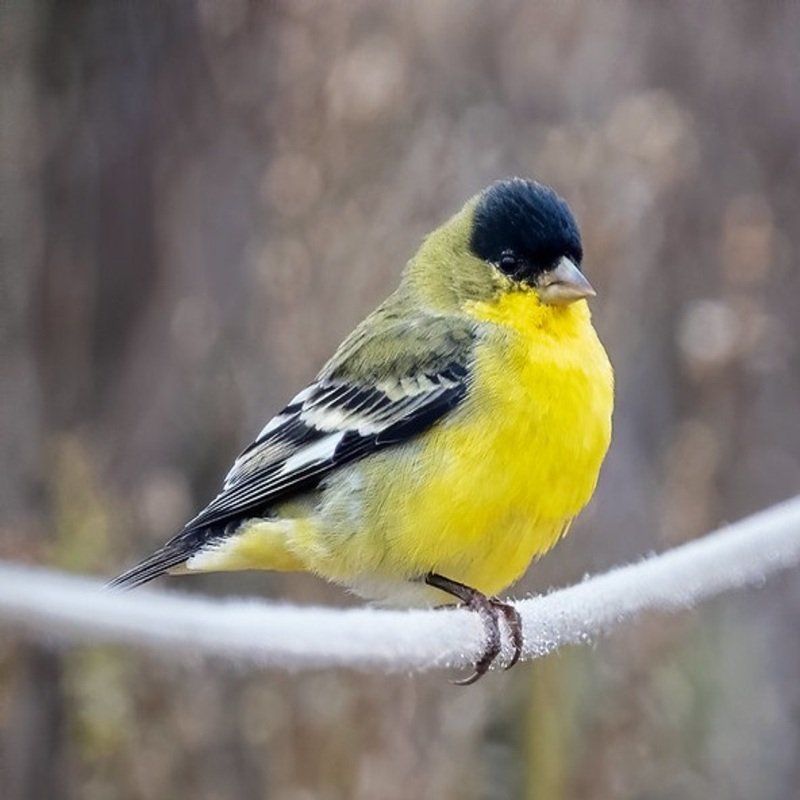The Lesser goldfinch, Spinus psaltria is a very small American songbird. Together with its relatives the American goldfinch and Lawrence’s goldfinch, it forms the genus Spinus sensu stricto clade of goldfinches.
Quick Overview: Spinus Psaltria – Lesser Goldfinch
Body size: Around 4.8 in (11 cm) and a weight of 9 g (0.3 oz)
Main colors: Black, White, Yellow
Range: Western United States
Migratory Bird: Yes
Best time of the year to see in the U.S.: All Year (January – December)
Conservation Status: Least Concern
Lesser goldfinch Description
Small finch with a black back (dark green in the west), black crown, and bright yellow underparts. Black wings and tail with white markings.

Size
These birds have a length of 4.8 in (11 cm) and a weight of 9 g (0.3 oz). Their wings could range from 8 in (20 cm).
Feeding
Lesser goldfinches have more tapered beaks than other goldfinch species. These tapered beaks enable them to reach seeds trapped in chaff or alder cones much more easily. Their diet, however, is not limited to these seeds. They can manipulate a wider variety of seeds with their beaks. Additionally, lesser goldfinches forage differently than other goldfinch species. Lesser goldfinches tend to fly around in search of food, rarely remaining in one location for an extended period of time. Other goldfinch species are frequently observed feeding in a single location for extended periods of time.
Habitat
This American goldfinch is found throughout the southwestern United States (along the coast and as far north as extreme southwestern Washington), as well as Venezuela and Peru. It migrates from the colder parts of its range in the United States. The lesser goldfinch is frequently found in flocks or loose associations.
Behavior
Lesser goldfinches are extremely gregarious. They are frequently seen in flocks of about four to six individuals. These flocks fly in unison and forage for food in unison. Lesser goldfinches are frequently observed interacting with other bird species, particularly other goldfinch species such as Lawrence’s goldfinches. Due to the fact that these species live in dry areas, water availability may be limited, forcing them to share water for drinking and bathing. Lesser goldfinches migrate in flocks of 20 to 30 birds during the breeding season. These flocks may consist entirely of lesser goldfinches, or they may contain multiple goldfinch species.
Spinus Psaltria Scientific Classification
- Kingdom: Animalia
- Phylum: Chordata
- Subphylum: Chelicerata
- Class: Aves
- Order: Passeriformes
- Family: Fringillidae
- Subfamily: Carduelinae
- Genus: Spinus
- Species: Spinus psaltria
Best time of the year to see
In the United States, the best time of year to see these birds is all year round, regardless of the season. This refers to any month of the year between January and December.
Distribution of the Lesser goldfinch in the USA
From Washington, Oregon, and northern Nevada east to northern Colorado and Texas and south beyond the United States-Mexico border, resident. From northern Colorado to Texas and westward to Utah and Arizona, the eastern race is found. From Utah to the Columbia River, the western race occurs.

